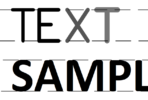Some say it can’t be done. Revit is too hefty of a modeling program for conceptual design. Some even say designers don’t need to learn Revit because they have other design tools. But, Revit can be a fantastic design tool, and if used correctly, can transfer to a clean usable model for construction documents. Sound too good to be true?
The first thing I ever used Revit for was rendering, believe it or not. I found it to be of better quality and easier to maneuver than Architectural Desktop. I just had to create the shell of the building, put in a few trees, cars and people, and presto! A decent rendering that gave the client what they wanted. Revit’s rendering tools have come a long way since then. There seems to be a “love it or hate it” consensus on the Revit rendering engine (Autodesk Raytracer in Revit 2018). Regardless, it takes a certain artistic approach rather than a more technical approach. Check out Steven Shell’s Autodesk University tips and tricks class on rendering.
One of the challenges with designing in Revit is over-development of the model early in the design process. It’s so easy to model *everything* in Revit, before you know it you have a detailed model, and it’s not even through design development! This could be addressed by using a program like FormIt to create early design massing, collaborate real-time with design team members, and even apply energy analysis (Pro version required for collaboration and energy analysis). If Revit is the only option, then it is up to the user to exercise the control needed to keep the model simple, yet informative. This will give the client enough visual content to be able to understand the design and give feedback. The key to creating a Revit conceptual model is to keep the end game (construction documents) in mind. The model should be as construct-able as possible so that the transition to construction documents is a smooth process.
CAD Panacea author Kimberly Fuhrman will be presenting a session alongside Tobias Hathorn from Autodesk at BILT NA in Toronto on August 3rd, 2017. We will be discussing the conceptual design process and best practices with Revit and FormIt. Hope to see you there!




